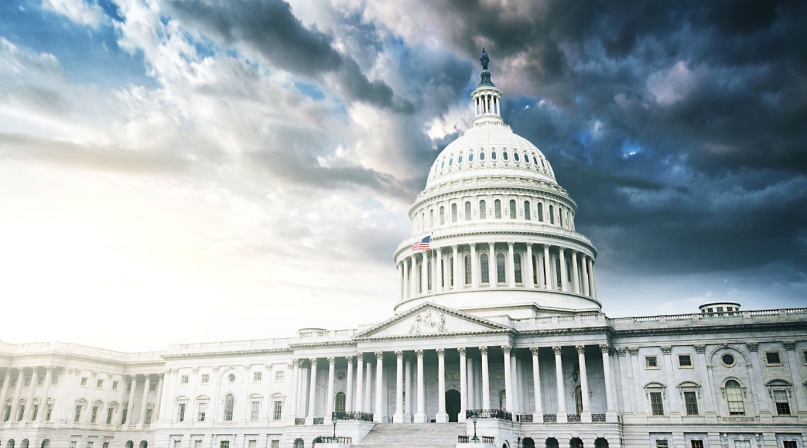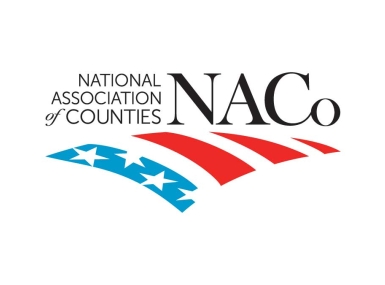Congress 2018: What’s ahead for counties?
Author

Kevan Stone
Upcoming Events
Related News

Busy legislative agenda, looming midterms puts pressure on Congress
When Congress began its legislative agenda last year, it was presented with an environment Washington had not seen since 2009, one-party control in the legislative and executive branches. With a majority in both houses and President Donald Trump in the White House, the Republican Party set in motion an ambitious plan to fulfill promises made during a tough 2016 campaign.
Learn More
Congress laid out priorities dealing with health care, tax reform and infrastructure, to name a few. Political battles saw some issues delayed, others abandoned, but some accomplished as well. Comprehensive tax reform was signed into law in December and the Trump Administration, through both legislation and executive orders, scaled back a host of regulations with the goal of spurring economic growth and job creation.
As we look ahead to 2018 and the final year of the 114th Congress, America’s counties will face a legislative calendar that will affect local governments for years to come. Although the results in Washington are unpredictable at best, one thing is for certain, if 2017 was any indication, 2018 will certainly have its share of surprises.
President Trump has made no secret of his intent to shake up the way Washington works. This has not only included what he refers to as “draining the swamp,” but also — through his budget and blueprint documents — a systematic change in governing philosophy across the federal government that touches counties and the programs they administer, directly.
In addition to appropriations, issues such as health reform, infrastructure development, Payment in Lieu of Taxes (PILT), Secure Rural Schools (SRS), and major reauthorization bills such as the Farm Bill, all figure to attract attention this year. With 10 months before the midterm elections and a jam-packed legislative calendar, 2018 promises a whirlwind of legislative activity.
Appropriations
While the FY2018 budget year began on Oct. 1, 2017, there have already been two continuing resolutions, or CRs, to temporarily fund the federal government. Important programs for counties such as the Children’s Health Insurance Program, Community Development Block Grant program, Social Services Block Grant, Community Services Block Grant, and the One-Time Assistance to Needy Families programs find themselves dependent upon an always contentious budget process.
Like previous budget deliberations, last year’s discussions brought neither clarity nor conclusion to Capitol Hill’s ongoing budget battles. Issues such as a border wall, the Deferred Action for Childhood Arrivals (DACA) program and other politically contentious subjects complicated the difficult balancing act of keeping the government funded while addressing the hot-button issues.
Infrastructure
In the coming weeks, the White House plans to further detail its vision for a comprehensive infrastructure package. This plan, which could include both traditional transportation infrastructure and non-traditional infrastructure such as energy, broadband and veterans’ health facilities, intends to address an infrastructure network in dire need of repair in order to keep pace with a growing 21st century economy.
As reports stand today, the White House will propose a package spanning 10 years with $1 trillion in total investment. The federal government’s share would weigh in at $200 billion new funds in addition to an unspecified amount dedicated to rural infrastructure. While both sides of the aisle agree that infrastructure investment is necessary, there are stark divisions on how to provide the funding.
Some in Congress have argued any new spending must be offset with cuts elsewhere in the budget. Others believe the rumored $200 billion federal investment is not nearly enough. The information the administration has released thus far seems to indicate an appetite to invite private investment for infrastructure development as an integral part of their plan.
While NACo supports public-private partnerships (P3s), they are not viable solutions in all parts of the country. Grants intended for rural infrastructure programs, including broadband deployment, will be a central part of any plan as P3 investment may not be available in these areas. President Trump has acknowledged as much, with public statements downplaying the level of P3 dependence on an infrastructure package.
Regardless of the details for any plan, there has been one constant from the administration thus far. Originating with the Infrastructure Initiative document within the president’s FY2018 budget, and continuing with stakeholder discussions, the administration does seem to expect local governments to increase their financial commitment to new projects in order to be eligible for any new funds.This presents multiple concerns for counties. Forty-five states impose some level of restriction both on how much revenue can be raised and what it can be spent on. Furthermore, if counties were to alter existing budgets to bring more infrastructure funds to the table, than other vital services would see reductions in their budgets.
The administration’s plan is not expected to arrive in the form of legislative text. The administration calls its recommendations “legislative principles.” Subsequently, it will be up to the House and Senate to craft eventual legislation.
Health Care Reform
While legislation formally repealing the Affordable Care Act did not pass in the Senate in 2017, it doesn’t mean that issues pertaining to health services provided by counties are immune from further congressional action. Programs such as Medicaid will continue to be a major issue in 2018. NACo supports protecting the federal-state-local partnership structure for financing and delivering Medicaid services while maximizing flexibility to support local systems of care.
Counties are concerned about measures that would further shift Medicaid costs to counties, including proposals to institute block grants or per capita caps. These proposals would increase the amount of uncompensated care provided by counties and reduce counties’ ability to provide for the health of our residents. NACo also supports targeted efforts to enhance flexibility in the program to support local systems of care, including easing Medicaid’s Institute of Mental Diseases and inmate exclusions.
Additionally, the Children’s Health Insurance Program, which has been temporarily funded through recent CR’s, must be addressed through full funding and long-term reauthorization. This program, like many other issues important to counties, face long-term funding uncertainty, rendering counties unable to budget and project their communities’ needs.
Tax Reform
While tax reform may have passed Congress and become law, there is still work to be done as it pertains to implementing a sweeping overhaul of the federal tax code. Over the coming months, Congress will vote on technical fixes to the bill, some of which could affect counties. NACo will continue to stress the importance of financing tools such as municipal bonds, and the ability to refinance municipal bonds, which was eliminated in the comprehensive tax reform bill.
Entitlement Reform
With tax reform signed into law, there is still a notion within both chambers that the deficit hole it created must be filled. Medicaid funding could be in the crosshairs of this potential reform, as being a large “pay-for” towards the tax reform created deficit hole. As of now, House Speaker Paul Ryan has stated his desire to tackle entitlement reform while Trump has been lukewarm to the idea. Senate Majority Leader Mitch McConnell has stated he does not intend to address entitlement reform this year. Entitlement programs are not restricted to Medicaid, Medicare and Social Security, however, and could include other programs such as the Supplemental Nutrition Assistance Program (SNAP) along with other services provided to residents and used by counties.
PILT and SRS
The PILT program remains at the top of NACo’s priorities for 2018. Also vitally important is the funding and authorization of the Secure Rural Schools (SRS) program.
NACo supports restoring full mandatory funding for PILT, which compensates counties for non-taxable federal land within their boundaries. NACo also supports extending SRS as a transitional funding mechanism until the federal government fully implements a sustainable long-term forest management program with adequate revenue-sharing for forest counties and schools.
Furthermore, if Congress fails to reauthorize SRS, county forest payments will revert to the permanently authorized 25 percent revenue-sharing payments under the National Forest Revenue Act of 1908, severely impacting county government revenue.
While members on both sides of the aisle support PILT, there has not been a firm commitment to permanently address this issue.
Farm Bill
With the Agricultural Act of 2014 set to expire this budget year, Congress will look toward passing another Farm Bill in 2018. NACo supports a long-term reauthorization of the Farm Bill to help counties provide critical investments in some of the nation’s most underserved communities. In addition to a long-term reauthorization, NACo also supports full funding for all Farm Bill titles, which help strengthen the nation’s rural infrastructure, protect the nation’s food supply, increase access to healthy food for low-income populations through SNAP, and promote environmental stewardship and conservation.
A full bill text from both chambers is expected to be released before March.
Some in Congress will look to reform the nutrition sections of the bill, especially those with an appetite for entitlement reform, while others will prefer to concentrate on the bill’s agricultural titles.
Regulatory
Whether it comes as legislation or executive orders, the administration’s regulatory reform agenda will continue to take shape in 2018. Following President Trump’s edict of eliminating two regulations for every new one introduced, bureaucratic red-tape reduction aims to expedite growth and speed up various project deliveries.
From infrastructure to water resources management, public lands and emergency relief, President Trump has declared a more business-friendly, less regulatory environment will expedite implementation, spur business growth and hasten economic development and job growth.
Aside from high-profile issues that could see comprehensive legislation, Congress will also consider equally important measures, minus the fanfare, that affect counties.
The Water Resources Development Act (WRDA) has returned to a two-year cycle, with a vote expected in the latter part of 2018. WRDA is vital to NACo members since it addresses Army Corps of Engineers’ (Corps) water infrastructure projects associated with flood prevention, beach replenishment and environmental restoration, as well as authorizes and manages the Harbor Maintenance Trust fund, which helps counties embark on large scale projects such as port expansion and harbor dredging, and Corps policy issues.
Also expected to be addressed this year is the Waters of the United States (WOTUS), with the Supreme Court expected to rule on court jurisdictional issues with WOTUS-related cases.
Additionally, EPA will be hard at work rewriting the WOTUS rule, as well as revising their current policy on the replacement of lead and copper service lines in drinking water systems.
Finally, EPA is expected to release its final list of county ozone designations under the 2015 rule by April 30.
Regulatory frameworks were not restricted to land, environment and infrastructure sectors in 2017, but economic reforms also played a part as well, notably the Department of Labor’s decision not to defend the Obama Administration’s rulemaking on overtime pay. NACo had expressed its concerns over the increased administrative and financial burden the rule would impose on the nation’s counties, which employ more than 3.6 million people and provide services to over 305 million county residents.
It’s also expected that Congress will address cybersecurity reform and engage in new debates centered on the funding of the 2020 United States Census. Congress also, throughout all federal agencies, will be looking at new regulations which could lead to federal preemption of local authority in issues such as unmanned aerial systems and wireless facility siting and 5G wireless network deployment. Preemption is something that will be on all local governments’ radar, as a debate over federalism continues.
With approximately 10 months before the midterm elections, Congress has no shortage of issues to undertake.
Fights will be waged and consensus will prove daunting. One thing is for certain, counties must be ready to educate and advocate for a continued strong federal-state-local partnership to ensure the strength and stability of our residents and communities in 2018 and beyond.
Attachments
Related News

County Countdown – Dec. 15, 2025
Every other week, NACo's County Countdown reviews top federal policy advocacy items with an eye towards counties and the intergovernmental partnership.

County Countdown – Dec. 1, 2025
Every other week, NACo's County Countdown reviews top federal policy advocacy items with an eye towards counties and the intergovernmental partnership.

Counties Celebrate Key Permitting Inclusions in SPEED Act
NACo issued the following statement in response to the passage of the Standardizing Permitting and Expediting Economic Development (SPEED) Act (H.R. 4776), which advanced out of the U.S. House Committee on Natural Resources on November 20.